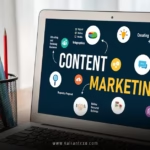Employee onboarding process workflow steps are the backbone of welcoming new hires into an organization, setting them up for success from day one. Imagine a new employee walking into their first day, buzzing with excitement but also a touch of nerves. How do you ensure they feel valued, prepared, and ready to hit the ground running? That’s where a well-structured onboarding process comes in—a roadmap that transforms a newbie into a confident, productive team member. In this article, we’ll break down the employee onboarding process workflow steps in detail, offering practical insights to make the transition smooth and engaging. Whether you’re an HR professional or a business owner, these steps will help you create a welcoming environment that fosters long-term success.
Why Are Employee Onboarding Process Workflow Steps So Important?
First impressions matter, don’t they? A robust employee onboarding process workflow steps framework does more than just hand out ID badges and company handbooks. It’s about building a connection, aligning expectations, and laying the foundation for employee engagement. Studies show that effective onboarding can boost retention by up to 82% and productivity by over 70% (Gallup). Without a clear process, new hires might feel like they’re navigating a maze blindfolded—confused, disconnected, and unsure of their role. Let’s dive into the key steps to ensure your onboarding process is a game-changer.
The Big Picture: What Does Onboarding Really Mean?
Onboarding isn’t just a one-day orientation or a pile of paperwork. It’s a strategic journey that integrates new employees into the company’s culture, processes, and goals. Think of it as planting a seed—you’re not just tossing it into the soil and hoping for the best; you’re nurturing it with the right environment, tools, and care. The employee onboarding process workflow steps cover everything from pre-boarding to long-term integration, ensuring new hires feel supported every step of the way.
Step 1: Pre-Boarding—Setting the Stage Before Day One
Why Pre-Boarding Matters
The employee onboarding process workflow steps begin before the new hire even steps foot in the office. Pre-boarding is like sending a warm welcome note before a guest arrives—it sets the tone. This phase involves preparing the new employee and the workplace for a seamless start.
Key Actions in Pre-Boarding
- Send a Welcome Package: Email a personalized welcome message with details about their first day, including start time, dress code, and what to bring. Add a touch of warmth—maybe a fun fact about the team they’re joining.
- Prepare the Workspace: Set up their desk, computer, and access credentials. Nothing screams “we’re not ready for you” like a missing chair or a broken laptop.
- Share Essential Documents: Provide digital copies of the employee handbook, benefits information, and key policies. This gives them a head start on understanding the company.
- Assign a Buddy or Mentor: Pair them with a team member who can answer questions and guide them through the early days.
By nailing these pre-boarding employee onboarding process workflow steps, you’re showing new hires they’re valued before they even clock in.
Step 2: The First Day—Making a Memorable Impression
Creating a Warm Welcome
The first day is like the opening scene of a movie—it sets the tone for the entire experience. The employee onboarding process workflow steps for day one should focus on making the new hire feel at home while introducing them to the company’s vibe.
First-Day Must-Dos
- Host a Warm Welcome: Greet them personally (or virtually) with enthusiasm. A quick team huddle or a welcome coffee can work wonders.
- Provide a Company Overview: Share the organization’s mission, vision, and values. Paint a clear picture of how their role fits into the bigger puzzle.
- Give a Tour: Show them around the office—point out the break room, restrooms, and key areas. For remote workers, offer a virtual tour of tools and platforms.
- Introduce the Team: Facilitate introductions to colleagues and key stakeholders. A friendly face can ease those first-day jitters.
Pro tip: Avoid overwhelming them with too much information. Keep it light, engaging, and focused on connection.
Step 3: Orientation and Training—Building the Foundation
Why Training Is a Core Part of Employee Onboarding Process Workflow Steps
Once the first day excitement settles, it’s time to dive into orientation and training. This step in the employee onboarding process workflow steps equips new hires with the knowledge and skills they need to thrive. Think of it as handing them a toolbox—each tool helps them tackle their role with confidence.
Structuring Orientation and Training
- Role-Specific Training: Provide hands-on training tailored to their job. This could include shadowing a colleague, attending workshops, or accessing online courses.
- Tool Familiarization: Walk them through the software, systems, and tools they’ll use daily, like CRMs, project management platforms, or communication apps.
- Compliance and Policies: Cover legal and company-specific policies, such as safety protocols, data privacy, or workplace conduct.
- Cultural Integration: Share stories or examples that highlight the company’s culture. Maybe it’s a tradition of Friday team lunches or a commitment to sustainability.
A well-executed training phase ensures new hires aren’t just learning—they’re connecting the dots between their role and the company’s goals.
Step 4: Ongoing Support—Keeping the Momentum Going
The Power of Continuous Check-Ins
The employee onboarding process workflow steps don’t end after the first week. Ongoing support is like watering a plant regularly—it ensures growth doesn’t stall. This phase focuses on helping new hires settle in and feel confident over the first few months.
How to Provide Ongoing Support
- Regular Check-Ins: Schedule one-on-one meetings at the 30-, 60-, and 90-day marks to discuss progress, challenges, and feedback.
- Encourage Questions: Create an open environment where new hires feel comfortable asking for clarification or help.
- Set Clear Goals: Work with them to establish short-term objectives that align with their role and the company’s priorities.
- Provide Resources: Offer access to learning platforms, mentorship programs, or internal wikis to support their growth.
By prioritizing ongoing support, you’re showing new hires that their success matters long after the welcome party.
Step 5: Feedback and Evaluation—Refining the Process
Why Feedback Is a Game-Changer
Feedback is the secret sauce of effective employee onboarding process workflow steps. It’s like a GPS—helping you navigate what’s working and what needs tweaking. Gathering input from new hires and evaluating the onboarding process ensures continuous improvement.
Implementing Feedback Mechanisms
- Survey New Hires: Send a short survey after the first week and again at 90 days to gauge their experience. Ask about clarity, support, and areas for improvement.
- Manager Feedback: Encourage managers to share insights on how the new hire is adapting and whether additional resources are needed.
- Refine the Process: Use feedback to update your employee onboarding process workflow steps. Maybe the training was too rushed, or the welcome package needs more detail.
This step keeps your onboarding process dynamic and responsive to real-world needs.
Step 6: Long-Term Integration—Turning New Hires into Team Stars
Building a Sense of Belonging
The final piece of the employee onboarding process workflow steps puzzle is long-term integration. This is where new hires transition from “the new guy” to a fully engaged team member. It’s like helping someone move from being a guest in your home to a family member who knows where the snacks are kept.
Strategies for Long-Term Success
- Foster Team Bonding: Organize team-building activities or social events to strengthen relationships.
- Recognize Achievements: Celebrate milestones, like completing their first project or hitting the six-month mark.
- Encourage Growth: Offer opportunities for professional development, such as workshops, certifications, or stretch assignments.
- Align with Company Goals: Regularly connect their work to the organization’s mission, reinforcing their purpose.
When new hires feel like they belong, they’re more likely to stay and thrive.
Common Mistakes to Avoid in Employee Onboarding Process Workflow Steps
Even the best-intentioned onboarding plans can hit roadblocks. Here are some pitfalls to dodge:
- Overloading Information: Bombarding new hires with too much info on day one is like trying to drink from a fire hose. Pace it out.
- Neglecting Culture: Focusing only on tasks and ignoring company culture leaves new hires feeling disconnected.
- Lack of Follow-Up: Without ongoing support, new employees might feel abandoned after the initial excitement.
- One-Size-Fits-All Approach: Every role and employee is unique. Customize the employee onboarding process workflow steps to fit their needs.
Avoiding these mistakes ensures your onboarding process is as effective as possible.
Tools to Streamline Employee Onboarding Process Workflow Steps
Technology can be your best friend when executing employee onboarding process workflow steps. Here are some tools to consider:
- HR Software: Platforms like BambooHR or Workday simplify paperwork, training tracking, and feedback collection.
- Communication Tools: Slack or Microsoft Teams keep new hires connected with their team, especially in remote settings.
- Learning Management Systems (LMS): Tools like TalentLMS or LinkedIn Learning offer structured training modules for skill development.
These tools save time and create a polished, professional onboarding experience.
Conclusion: Crafting a Winning Onboarding Experience
The employee onboarding process workflow steps are more than a checklist—they’re a strategic investment in your team’s success. From pre-boarding preparations to long-term integration, each step plays a vital role in helping new hires feel valued, supported, and empowered. By following these steps, you’re not just onboarding employees; you’re building a foundation for loyalty, productivity, and growth. So, take a moment to review your current process. Are you setting your new hires up to shine? With a thoughtful approach to employee onboarding process workflow steps, you can turn first days into lasting success stories.
FAQs
1. What are the most critical employee onboarding process workflow steps to prioritize?
The most critical employee onboarding process workflow steps include pre-boarding (to set expectations), a warm first-day welcome, and role-specific training. Ongoing support and feedback are also key to ensuring long-term success.
2. How long should the employee onboarding process workflow steps take?
The duration varies, but a comprehensive employee onboarding process workflow steps typically spans the first 90 days, with intensive focus in the first week and regular check-ins thereafter.
3. How can small businesses implement effective employee onboarding process workflow steps?
Small businesses can focus on personalized pre-boarding, clear training plans, and regular feedback. Using affordable tools like Google Workspace or Trello can streamline the employee onboarding process workflow steps without breaking the bank.
4. Why is feedback important in the employee onboarding process workflow steps?
Feedback helps refine the onboarding experience, ensuring it meets new hires’ needs. It also shows employees their input is valued, fostering engagement within the employee onboarding process workflow steps.
5. Can technology replace human interaction in employee onboarding process workflow steps?
No, technology enhances but doesn’t replace human interaction. Tools streamline tasks, but personal connections—like team introductions and mentorship—are essential for effective employee onboarding process workflow steps.
For More Updates !! : valiantcxo.com


